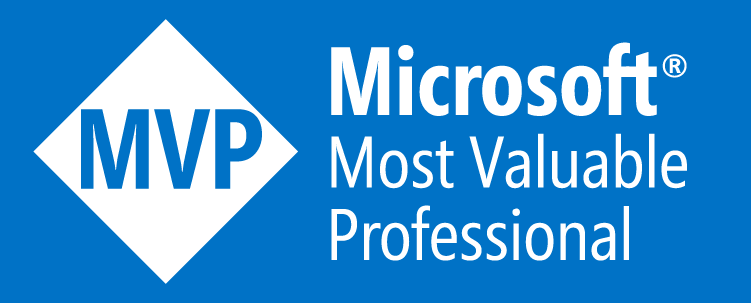Update Rollup 4 für System Center 2012 R2 Virtual Machine Manager
14. November 2014
Das Update Rollup 4 für System Center 2012 R2 Virtual Machine Manager, behebt eine Vielzahl von Fehlern und bringt neue Funktionen mit sich.
Folgende Fehler wurden behoben:
- When the „Add VM Role“ operation fails, you receive the following error message:
Error (3101) VMM failed to mount virtual hard disk (VHD)
When you build virtual machines (VMs), many VM roles fail with error 3101.
- New VM creation fails, and you receive the following error message:
Failed Acquiring Write lock on StaticIPAddressPool.
New VM tasks obtain a lock on a common static IP address pool to allocate „PA“ addresses (HNV). After a lock is obtained, the task issues a Get-SQL query or queries on the IP address pool. If the task takes a long time (longer than one minute), the task fails. Additionally, other parallel tasks with lock exceptions fail while they wait for the lock on this same static IP address pool.
- At VMs scale of 3250 or more, simple jobs such as full VM refresh or Discover VM jobs run longer than 30 minutes. This occurs because of a global lock , and tasks are waiting for the „UpdateNetworkVirtualizationTablesIfNeeded“ process.
- The Dynamic Host Configuration Protocol (DHCP) extension responds or drops all the DHCP and bootstrap protocol (BOOTP) requests. In some scenarios, DHCP extension requests are blocked. This causes some automations not to work in this environment.
- The override for the „Monitoring Host Private Bytes Threshold“ monitor is associated to only one of the Microsoft System Center Virtual Machine Manager (VMM) servers. It should be applied to VMM servers or groups requesting it.
- Clustering fails in any environment that uses DHCPv6 complete addresses.
- Disaster recovery (DR) capabilities are not easily discoverable by VMM. The DR user interface is enabled successfully after you install a DR architecture provider. The provider displays and enables the „Manage protection“ ribbon action for VMs.
- When a Commit or Dismiss request is performed on a service, KVP key leaks occur on the host. After the KVP keys reach the limit of 1,024 keys, the service stops responding with its state set to „Servicing Failed.“
- Commit and Dismiss requests with repeated application resources in GoalState crash the guest agent.
- When a Generation 2 VM template is created out of a Generation 2 VM whose first boot device is „FILE,“ the generated template cannot be used to create VMs unless you fix the FirstBootDevice property.
- During Microsoft SQL Server updates, a connection to VMM cannot be established, and all database operations return an error. Additionally, some critical exceptions are reported.
- When there are multiple update approval systems other than VMM for a given Windows Server Update Services (WSUS) server, VMM update approval does not function as intended. In this case, the user can be in incorrect compliance for the baselines that are created in VMM.
- When you put a computer into maintenace mode in VMM, you receive the following message:
Health Service Heartbeat Failure
This occurs because VMM is not putting the Health Service Watcher (Agent) into maintenance mode.
- VMM cannot push instance space data into Microsoft System Center Operations Manager if a virtual machine in the VMM library is in a failed state.
- VMM management packs incorrectly send a message to the user when a VM is put into a paused state. This should occur for „push only“ messages only when there is an action that the administrator has to resolve.
- Upgrade of the VMM Storage management packs to the latest version fails because of an import ordering issue.
- The following Error 26001 is logged in the Application log for all Microsoft System Center 2012 R2 hosts:
Log Name: Application
Source: Microsoft.SystemCenter.VirtualMachineManager.2012.Report.VPortUsageCollection
Event ID: 26001
Description: Got null results from Select Connection from object
- This update fixes an issue in which GUIRunOnce commands do not work for Generation 2 customizations.
- The Host Cluster refresher puts a lock on the cluster. This causes the operations on the host to fail while the refresher process is running.
- Azure Site Recovery is the new product name for Hyper-V Recovery Manager. This update changes old strings and UI references in VMM to reflect the new name.
- When you enable AutoLogon and GuiRunOnce during VM deployment, the CheckInstallOffline function in the VMAdditions.cs file makes a call to GUIOnceSetter.SetAndGetOldValue. The GUIOnceSetter class then configures the RunOnce registry subkey to run the configured command.
- This update increases the Shutdown Host operations time-out value. This value is currently 5 minutes. Shutting down a compute node with at least 10 VMs always fails from VMM. This occurs because VMM is waiting only 5 minutes even though Failover Cluster Manager(FCM) actually takes more time because it depends on the live migration time for the VMs.
- When the Get-SCVMHostRating or Update-SCVMConfiguration routines are called many times in a short time, the same host and disk are selected for all workloads.
- When multiple VM creations occur in parallel, some creations fail with the following message:
Temporary Template not found.
- VMM incorrectly displays the administrator view of an error when CloudMessage is not defined for the error. This issue incorrectly displays the physical machine details instead.
- In some cases, refresh jobs stop responding, and no other jobs run even after you restart the VMM service.
- During stress testing, SQL connections are being exhausted. Therefore, thread that is holding network service locks cannot continue because of database-connection issues. These issues hold the lock forever.
- During GW template deployment, the back-end network adapter is left unconnected, and the virtual machine queue (VMQ) cannot be enabled by the template.
- When a virtual machine subnet is removed by the network service, VMM marks it for deletion but does not actually delete it even if it is not attached to a VM.
- When both nodes of the Windows gateway cluster fail (because of software or underlying server hardware or even rack failures), all tenants behind the gateway lose connectivity. Because you cannot recover the gateway, the only way to reestablish the service is to delete all gateway information from customer records and only then deploy the gateway from scratch to reestablish the connectivity. For information about how to recover a failed gateway after you apply Update Rollup 4, see Recovering a gateway that was deployed through VMM and is running Windows Server 2012 R2.
- Virtual machine migration is blocked if logical network definitions are not the same on source and target hosts.
- When one of the Hyper-V hosts in the cluster has an issue with the network because of a corruption in the NDIS layer (or any other problem that occurs on the host), the host might lose network adapter configuration and switch configuration information. When such a problem occurs on a host, the High Availability (HA) calculation for the switch identifies the switch as non-HA across the cluster and blocks any new VM deployment.
- F5 load balancers that are acting as a network virtualization by using the Generic Routing Encapsulation (NVGRE) gateway cannot route incoming traffic because of the asymmetric nature of the routing in „PA“ addresses (HNV). Additionally, the load balancers must be able to provide active-active health monitors for failover of their devices to maintain active services.
- The SCVMM service crashes multiple times during a Disaster Recovery Scale run.
- VMM uses New-Volume API in SMAPI to create a new witness disk on Spaces storage. By default, New-Volume creates an MBR partition. With this update, the disk is created by using the GUID partition table (GPT) instead of the master boot record (MBR).
- This update adds one additional field to show the success or failure of a refresher event in the VMM performance logs. This field is added specifically for the Background Refresher Events (Eventid 4024 and 4025) and Event Based Refresher Events (Eventid 4026 and 4027).
- VMM does not establish the event channel with hosts after a restart. This leads to out-of-sync issues with the cluster.
- This update includes resolution knowledge for the HBA port warning. This knowledge is now updated with more meaningful information instead of just querying HBA port status.
Folgende Funktionen werden hinzugefügt:
Der Support für folgende Linux Distributionen wurde hinzugefügt
- Red Hat Enterprise Linux 7 (64 bit)
- Oracle Linux 7 (64 bit)
- CentOS Linux 7 (64 bit)
Beim Update bitte folgendes beachten:
Das Update kann über Windows Update oder manuell bezogen werden.
Bei der Installation bitte folgende Reihenfolge einhalten:
- Administrator Konsole
- VMM Server
Es sind keine separaten SQL Skripte mehr erforderlich.
Important The System Center Virtual Machine Manager DHCP Server (x64) component must be manually updated on all VMM Hyper-V hosts. If this component is not updated, virtual machines may not be assigned an IP address for several minutes after the restart of the VM. (Eventually, the VM receives the IP address and otherwise functions as usual.) To check the version of the VMM DHCP agent, run the following command from an elevated PowerShell Command Prompt window on the host:
Get-WmiObject -Class win32_product -Filter 'Name = "Microsoft System Center Virtual Machine Manager DHCP Server (x64)"' |
Get-WmiObject -Class win32_product -Filter 'Name = "Microsoft System Center Virtual Machine Manager DHCP Server (x64)"'
Ähnliche Beiträge



Leave a comment